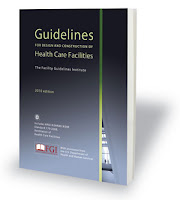Building Information Modeling (BIM) has been around for years. When it became the trend in the Construction Industry, some embraced it almost immediately. Others wanted to wait it out and see how the more adventurous would do first. It seems to be everywhere nowadays. But what exactly is BIM? It is a computer-aided process that generates and manages building data information throughout the life cycle of a given structure. True or not, this proposed function sounds suspiciously broad to many professionals. In more practical terms, BIM is currently used with the upgraded Computer-Aided Design (CAD) in 3D; game changer in design and construction management. There are several programs that can offer BIM integration.
Today, we have building proposals and client requests wanting us to work with BIM. And sometimes, even more specifically, we are told in which BIM program the work has to be. It’s definitely a different way of working with building information. It offers team sharing flexibility, interdisciplinary coordination, the obvious 3D advantages, not to mention all the possible 4D, 5D, and green analyses you can imagine. Those of us working with BIM couldn’t do without it now. It seems intuitive and direct -at times.
On the other hand, those faced with the decision of picking one BIM product, usually pick between two of the most popular options in the US market: ArchiCAD (by Graphisoft), and Revit (by Autodesk).
Which BIM can work for you?
The answer: It depends. It is hard to say which program is better without comparing them side by side. After working with both, I would hand pick features of one and implement them in the other to create a sort of super-charged version to meet my specific needs. Each program comes with a set of particular advantages that you can tap depending on your delivery model(s). Definitely, be informed before moving along.
When is it a good BIM time?
Typically, a learning curve moves at a positive exponential rate. And there is no difference when learning this program. Account for additional upfront time, a new design process with your team, and new delivery outputs. There are transition bumps along the way. New is different, but can also be more efficient. Be in a change-ready mindset. Anytime something new is put into place, there is going to be an interval of integration time involved.
The same old still works.
Yes. And same in, same out. These are changing times in a market where distances seem to be shrinking. Competition is everywhere, more so than ever. BIM is becoming an industry standard. That being said, it is likely we’ll have a standardized interchangeable platform in the near future. Similar to the interchangability of word documents in PCs and Macs, this platform would allow all types of BIM products to co-exist and extrapolate data without losing information. This could be achieved within a common frame.
The more we engage in BIM, the more we will multiply its advantages for the benefit of the industry and our services. I believe BIM is still in its infancy and that the best of it is around the corner. There is still work to be done in the BIM-sphere.

